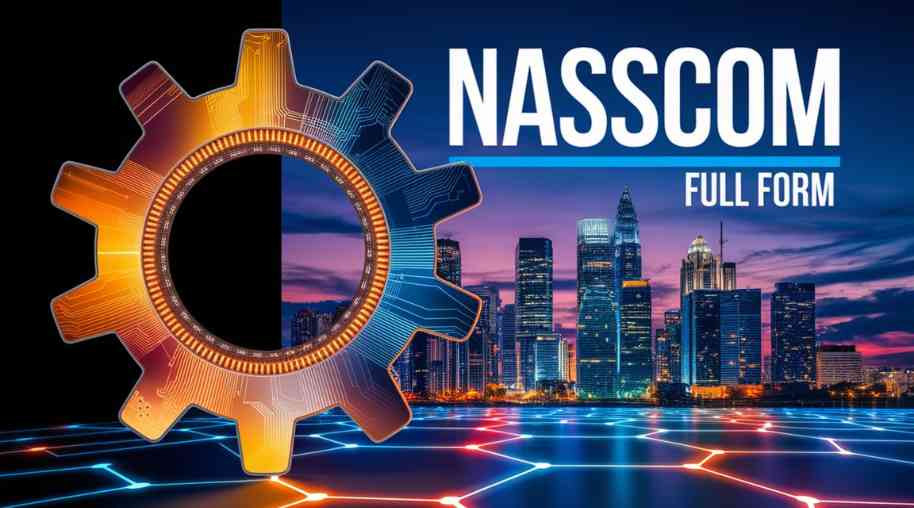NASSCOM Full Form-National Association of Software and Services Companies
by Shashi Gaherwar
0 2522
National Association of Software and Services Companies (NASSCOM): Role, Initiatives, and Impact
The National Association of Software and Services Companies (NASSCOM), founded in 1988, drives India’s IT and software industry, fostering innovation and global leadership. This article explores its role, initiatives, and economic impact.

The Role of NASSCOM in India’s IT Industry
NASSCOM catalyzes IT sector growth by:
- Policy Advocacy: Shapes IT-friendly policies with the government.
- Skill Development: Upskills professionals in AI, blockchain, and cloud computing.
- Startup Support: Mentors tech startups via the 10,000 Startups Initiative.
- Research Insights: Analyzes global IT trends and talent strategies.
- Global Partnerships: Promotes Indian IT services worldwide.
NASSCOM’s Key Initiatives
NASSCOM leads with:
- FutureSkills Prime: Offers certifications in AI, IoT, and big data.
- AI Adoption: Promotes AI in healthcare, finance, and education.
- Cybersecurity: Strengthens frameworks to meet GDPR standards.
- GCC Forum: Supports multinational IT and R&D hubs in India.
Impact of NASSCOM on the Indian Economy
NASSCOM contributes by:
- IT Outsourcing: Establishes India as a global IT hub, generating billions.
- Job Creation: Employs over 5 million IT professionals.
- Startup Growth: Fosters billion-dollar tech unicorns.
- Foreign Investment: Attracts global funds through innovation.
Challenges and Future Outlook
NASSCOM faces:
- Global Competition: Rivals from China and Eastern Europe.
- Automation Impact: AI affects job availability.
- Cybersecurity Threats: Rising data protection concerns.
NASSCOM drives India’s IT leadership through advocacy and innovation. By embracing quantum computing and sustainability, it will shape India’s trillion-dollar digital economy.
Further Learning Resources
If you’re passionate about building a successful blogging website, check out this helpful guide at Coding Tag – How to Start a Successful Blog. It offers practical steps and expert tips to kickstart your blogging journey!
For dedicated UPSC exam preparation, we highly recommend visiting www.iasmania.com. It offers well-structured resources, current affairs, and subject-wise notes tailored specifically for aspirants. Start your journey today!

Share:








Comments
Waiting for your comments